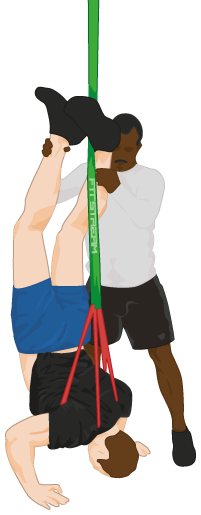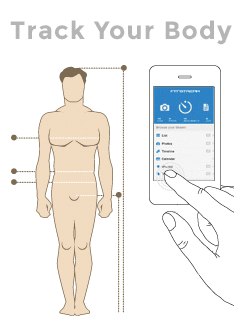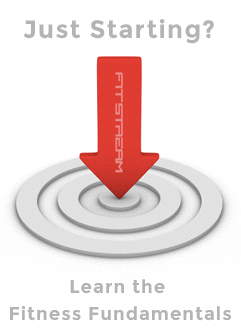How to Handstand
The following instructions are for the freestanding handstand but if you're not quite up to the free-hold version yet please see below for tips on learning to handstand.
- Stand straight and lift hands above your head.
- Lift one leg in front and step forward (whichever leg you're most comfortable with).
- Start to lean forward while keeping your body in straight alignment with the grounded foot and tip your body over your lunged leg (a common mistake is to throw hands straight down to the ground and try to throw the legs up which results in a snappy movement that causes you to fall forward).
- As your arms approach the ground keep them perfectly straight and the force of the weight distributed around the base of the fingers.
- Straighten the body out, with the head in a neutral position and the back and legs straight.
Notes:
- Maintain your form and positioning at all times, trying to keep as straight and tight as possible.
- Keep legs together with toes pointed to ceiling.
- If you fall forward whilst in the handstand and have a soft surface you can exit the movement using a roll out (tuck chin to chest and forward roll).
Handstand Guide
The handstand is fundamental gymnastics skill and the perfect exercise to showcase total-body control, strength, balance, coordination and style.
It's an exercise that takes dedicated training to achieve and demonstrates an enviable amount of muscular control from head-to-toe that relatively few possess.
This fantastic exercise is more than just something to impress friends with and has many physical benefits -
- Muscular definition and strength for all upper-body
- Tightens the entire core, back and abdominals
- Increases tendon strength of hands, wrists and shoulders
- Carry over benefits to all other sports and physical activities
- Balance skills are developed
- Develops an improved awareness and control of body
Learning the Handstand
Learning the handstand requires patience and dedicated training and it can take many months to develop the required strength and stabilising muscles for a freestanding hanstand. Regular practice is essential.
Warning: The handstand can cause serious injury if not performed carefully and with excellent form.
Wall Handstands
One technique is to use a wall to help support your handstand and develop the necessary muscles.
Find a wall with plenty of space around you and preferably a soft floor (grass or a mattress are good options).
Note: You're likely to fall many times!
Stand around four to five feet away, facing the wall, step out and kick up to a handstand as described above, with one leg making contact with the wall, quickly followed by the other.
Keep practicing the movement and use a spotter if possible. Once you're able to kick straight up to a handstand on the wall, practice holding it for increasing periods to help develop your strength.
When you're competently holding the handstand you can try the exercise without using the wall. You might need a spotter at first to help you get in position (they can help prevent you from toppling over the top which is a common problem for beginners).
In the absence of a spotter you should learn the following gymnastic techniques to exit the handstand -
- The roll out - bend at the arms, tuck your head in (chin to chest) and roll forward and out of the handstand.
- Pirouette - twist your shoulders and walk one hand around, making a quarter turn with the body. You should now be able to step down without going forward and over.
Controlling the Handstand
The hands are key to controlling the handstand. Just like the same principle as the feet when standing upright (using your heels and toes to maintain balance) you will use the fingers (push fingers to ground when leaning forward) and base of the hands (push wrists down when moving too far backwards) to manipulate your weight and keep you balanced.
Fighting to stay upright as long as possible will help build up the strength and balance that you need.
 Resistance Band Handstands
Resistance Band Handstands
Another effective technique to help learn the handstand is to use resistance bands for assistance training. Choke a resistance band around a pull-up bar or overhead anchor point and wear another band around the shoulders, looped through the anchored band.
This technique should provide you with just enough assistance to help learn the correct handstand shape and stay upright!
Advanced Handstand Training
If you've mastered the freestanding handstand a good exercise to progress to is the handstand push-up.
Other more advanced movements include one-arm handstands, handstand walking and the advanced ring handstand.
Handstand Variations
There are many variations and progressions on the basic handstand exercise to consider:
 Fitstream AppTrack your fitness progress and see the difference for yourself with our free app
Fitstream AppTrack your fitness progress and see the difference for yourself with our free app










 Resistance Band Handstands
Resistance Band Handstands




